Japan's Urine Gangs And Their 'Pee Scam' Left Victims High And (Not) Dry
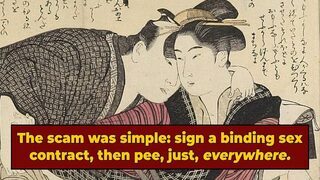
There is an old Japanese poem that goes, "cicadas and mistresses pee before running away" (much like with the term "bangable," Japan has a very broad definition of "poem.") Now, we don't know enough about the urological habits of insects to judge the veracity of the cicada claim, but we can confirm the existence of Japanese women with bladders as loose as their morals. You see, the entire poem, plus a few others like it, is actually a reference to a super weird scam that flooded Japan's capital during the mid-Edo period (1603 – 1868). It was perpetrated by the so-called Urine Gangs.
First, Some Historical Background
The Edo period marked the beginning of more than two and a half centuries of peace following Japan's unification. This seemed only fair, seeing as it was preceded by over 150 years of civil war and individual feudal lords fighting for dominion over the country. Basically, between the mid-15th and 17th century, Japan was a bloody free-for-all bunkhouse stampede for control of either the shogunate or the person sitting on the imperial throne. Once that was settled, and the Tokugawa clan came out on top, the new Tokugawa shogunate needed to strengthen the role of the central government and stop the provincial lords from getting any funny/treasonous ideas in the future.
Don't Miss
One possibility was to build a series of tubes stretching from the shogun's residence to the domain of every feudal lord around the country so that the boss man could periodically yell into them something like "Hey! Hey! You better not be fomenting dissent over there! I swear to God if you're having treacherous thoughts in there, I'll come right there and ...!" But once that was deemed more or less unfeasible, they came up with a better idea: just taking a bunch of hostages.
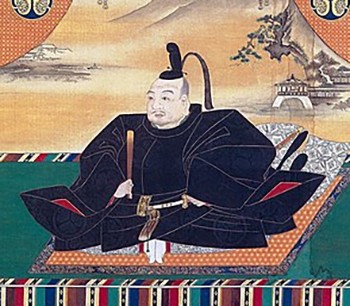
They created a system where the feudal lords' wives, children, and probably any dogs they really liked would reside in the capital city of Edo (old name for Tokyo), under the, umm, care of the shogun. By all accounts, they lived in relative luxury and safety, but with the well-understood threat of getting totally murdered the instant the head of their family stopped toeing the line. Don't worry, though. The feudal lords still got to see their families! In fact, they were obligated to. Another part of the whole hostage system deal was that provincial administrators had to split their time between their domain and Edo. So they would live one year at home while their family stayed at the shogun's Implicit Murder Inn, but after that, they had to pack up all of their shit and move to the capital for a year.
This sankin-kotai (roughly "alternate attendance") system worked like a charm. No feudal lord wanted to look like a poor bitch when entering the capital, so they made each move into one big, expensive parade. Most of them ended up spending 50-75% of their total wealth on the biennial trips. This didn't exactly leave them with a lot of spare change to fund revolutions against the shogun.
A Girl's Got to Make a Living
All of the above is a massive oversimplification of sankin-kotai, and if you cited it to an actual researcher of Japanese history, they'd have to invent a word that means both "angry" and "sad" (sangry?) to properly explain to the police why your dead body ended up looking like that. But the point is that the system created a nomadic population of still really rich guys in Edo who didn't stop chasing status symbols once they arrived in the capital.
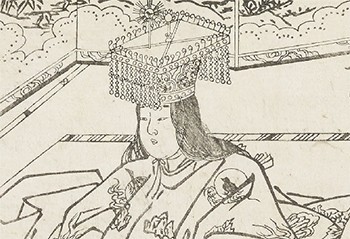
See, all millionaires ultimately want the same thing: something pretty and expensive that they can show off to all their friends and which they can get into a few times a day. Today, they'd just buy a luxury car. But back during the Edo period, they bought themselves a mistress. Now, mistresses were an integral though complex part of life in old-timey Japan. First of all, there were many kinds. Some resided in their own homes and had a bunch of sugar daddies that would visit her at different times. Or maybe sometimes at the same time. We guess some guys might've been into that. We don't judge. Plus, think of all the time the women saved on that. Other mistresses would go out and visit their patrons in their homes, basically the Little Caesars delivery of its time, right down to their slogan probably being "It's hot and it's ready." There was apparently even a kind of mistress that would visit a married man's house when his wife was out, often uninvited, and only left when she was compensated. We're just going to assume that that kind wasn't super popular. But the important thing is that, in most cases, being a mistress was an actual job, with actual signed contracts and everything.
Although we tend to have this idea of samurai Japan running on a Klingon system of everyone swearing on their honor etc., it was actually a super bureaucratic society. Damn near everything was done via contract, including some forms of prostitution, often carefully detailing obligations of both parties plus penalties for breaking the contract, etc. And just take a moment to think about some Japanese scribe having to write up a contract explaining just how many times a mistress had to spank her client a day and the exact measurements of her octopus costume. Not that there's anything wrong with that. We don't judge. In any case, it was this kind of litigious society that eventually helped create the Urine Gangs.
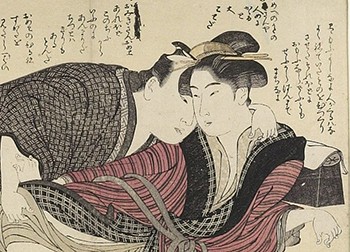
The Original Wet Bandits
Mistresses usually came from lower classes, but the really beautiful ones were extremely hot commodities, both in terms of looks and demand. There were actual brokers who introduced the most attractive single girls to powerful and rich feudal lords looking for mistresses, and they were paid A LOT for finding a really good-looking one. This was how Urine Gangs made money.
For the pee scam to work, the mistress broker and a beautiful girl had to have been working together. She'd be introduced to a sugar daddy, flash him her knee or whatever was considered taboo in Japan back then, and the feudal lord would pay the broker a massive finder's fee. They didn't mind. For one, most of their blood wasn't in their heads at the time. The client and the mistress would sign a contract, and, in most cases, she would be given her own accommodations where the client would visit and often spend the night. The next phase of the plan involved collecting as much money as possible from the mark, in addition to the payout, the woman's partner got earlier. Maybe she needed a new kimono, or maybe she got a letter from a prince in some African country who really needed her help freeing his funds. In any case, the mistress would attempt to bleed her sugar daddy dry (in addition to relieving him of other bodily fluids.)
Then, one day, after it's been decided they've earned enough, the woman would piss her bed. Not a euphemism for anything. She would just intentionally drench her mattress and, probably, the sugar daddy sleeping next to her with urine.
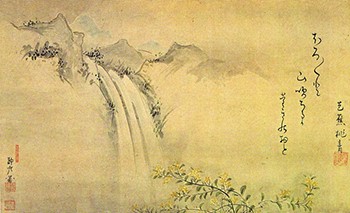
A dream of water,
streams flow, and I flow with them.
At dawn, stinky sheets.
The man would then wake up, yell out, "What, and I cannot stress this enough, the shit?!" Apologies would be made, fake tears may be shed, all new bed linens would definitely be bought, but that's where it usually ended. So the woman would piss the bad again. And again, and again, until all of the poor feudal lord's sheets were turned into impromptu diapers. The goal here, of course, was to thoroughly creep the guy out, although we can't stop imagining one unlucky Urine Gang girl doing her thing only to help some aristocrat learn some new things about himself when he notices his throbbing erection sticking out from his pee-soaked pajamas. Hey, as long as it's all consensual. We don't judge.
Anyway, the woman would then blame the bedwetting on some disease because while her contract did allow for her to be returned to the broker for a refund, it had to be for reasons other than an illness. Plus, if the woman blamed her peeing on a medical condition, the guy felt like a jerk for yelling at her and would usually release her from the contract. The Urine Gang would then move to another mark and ruin their bedsheets.
The Pee Scam Was Killed With Fire
The scam eventually became well-known around Edo, but there were still enough rich suckers arriving at the capital to help the Urine Gang turn liquid gold into actual gold. And then, finally, someone turned the tables on them.
Traditional Chinese medicine has been popular in Japan for centuries now, and its basis is the belief in the existence of meridian points throughout the body, which can be stimulated to improve circulation, help with certain ailments, and even cure chronic conditions. Acupuncture is probably the most famous example of it, but there is another way of stimulating the meridian points: moxibustion. It's the name for the burning of dried mugwort (moxa) on specific parts of the body.

The powdered mugwort would usually be placed in a very small cone and then lit until it caused the skin to blister. Some methods removed the burning cone before a blister could form but, still, it wasn't the most pleasant experience. So imagine having a mugwort lump the size of "a chicken egg" burned on your body.
That's the "cure" for bedwetting that some Edo doctor reportedly came up with. Just pile a bunch of dried plants on a woman's belly or whatever and set it on fire. The remedy was apparently very painful and soon word spread around the town: if you start to wet the bed, your patron will straight up fire-torture you. And just like that, the pee scam was flushed down the toilet of history.
Was This Actually Real?
Most of our evidence about the Urine Gangs comes from mentions in theatre plays and other not-exactly-scientific publications. It's almost certain that it happened at least once or twice. Say what you will about it, but it's a pretty genius idea. Gross, but genius. But whether it was actually part of some widespread "gang" activity or not? It's really hard to say. You have to look at how mistresses were presented in Japanese art in the olden days. For example, there are a lot of paintings that present them as drunk party-girls, plus one showing a mistress faking a pregnancy using a straw hat.

So old-timey mistresses definitely had a reputation for showing you a good time but also for being untrustworthy and scheming. This would have made it so easy for people to believe rumors of the Urine Gang, whether they were true or not. Again, chances are that the pee scam was definitely a thing, but we'll never know if it was a widespread thing until someone invents a time machine. And when they do, we seriously doubt that "going to watch Japanese women pee" will be very high on their list of time-travel priorities. At least not officially. Again, we don't judge.
Follow Cezary on Twitter.
Top image: Katsukawa Shuncho/Harvard Art Museum